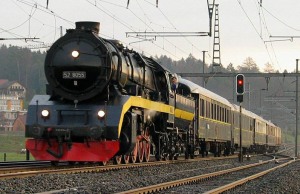
A National Public Radio article broke a news story that ends a vacation dream for me and a lot of people. The famous and original Orient Express, operating since the 1830s, is ending operations. Traveler shift to modern speed trains and cheaper flights across Europe made this train an endangered species. You can read the NPR article on the Orient Express and learn more about the train's storied history (The post does mention a second OE train service, but the original had the storied past).
Now, one business takeaway from the NPR posting is a shift of customer tastes on which the Orient Express, for one reason or another, was not able to capitalize. Many businesses face a market adjustment with two responses -- either reinvigorate your customer base despite the inevitable decline in an overall market or shift to new sources of customer. Cadillac is a great example - years ago it tried to stir its customer base with updated vehicles that continued its past definition of luxury despite the fact that it was aging (As customers grow older, they simply have less years to buy a car). Eventually it used a new line, the CTS, as a focal point to attract younger buyers interested in more performance - oriented luxury vehicles like BMW. Cadillac was able to lower the median age of the average purchaser.
One lesson for businesses is to examine the segmented traffic data they receive and develop how to best serve the traffic that can be converted into real customers. Many small businesses are learning to add analytics tags to their websites, like Yahoo! Analytics and Google Analytics, but many are not taking any time to review the data in a deeper analysis. Avinash Kaushik, author of Web Analytics 2.0 and Web Analytics, An Hour A Day, stressed the important perspective that website visitors are not an aggregate, that they arrive to a site for different reasons. Smart business leaders learn to engage these customers via social media, surveys, and generally talking to customers. Small businesses like Zimana consult businesses on how to best segment the data and determine actionable insights. Segmenting can help identify the right visitors that lead to outcomes -- sales, sign ups, downloads, etc. It can also direct offline business activity that may be required to support the desired outcomes. Dell's success in generating revenue from Twitter with its refurbished computer sales is an example.
In this case, Orient Express would have needed to find ways to appeal to customers on the romance of train travel, such as unique personalized customer service and reinforcing links to its destinations. This would have resulted in a focus on a core travel crowd that, while small in size, could yield to additional and profitable opportunities. This is not a new concept -- Coach focused on developing its brand of mid-level handbags on an ignored segment -- mid-luxury between luxury handbags and knock-off version. (Another example comes from Lexus -- check out the Zimana blog post on how it is marketing a new halo ultra-luxury sports car, the LF-A, to strengthen its global brand). Successful businesses often find new way to reinvigorate its customer base, and web analytics can provide a great insight if sales are conducted online.
Does your business try to segment its customers? if so, does the effort lead to great ways to stimulate customers (and sales)?
[...] as much traffic as possible may exceed the revenue generated. See the Zimana blog articles on segmentation and the Orient express as well as the post on the Lexus LF-A launch for examples of how large organizations deal (or not [...]
[...] and excitement through energizing its customer base to help expose its brand to new customers (for more on an example of segmentation, see the Zimana blog post on segmentation and the Orient Expr...). There are also hints of a shared customer-service provider experience – a leasing [...]